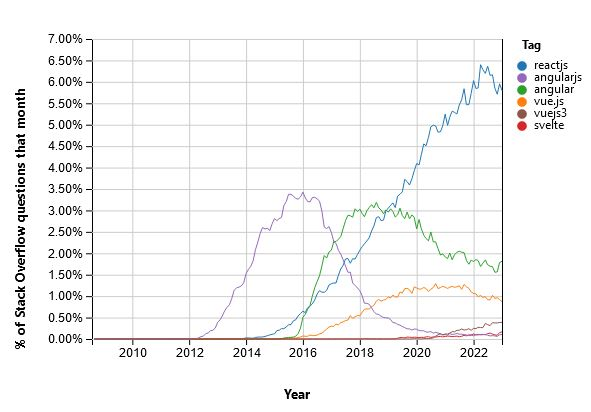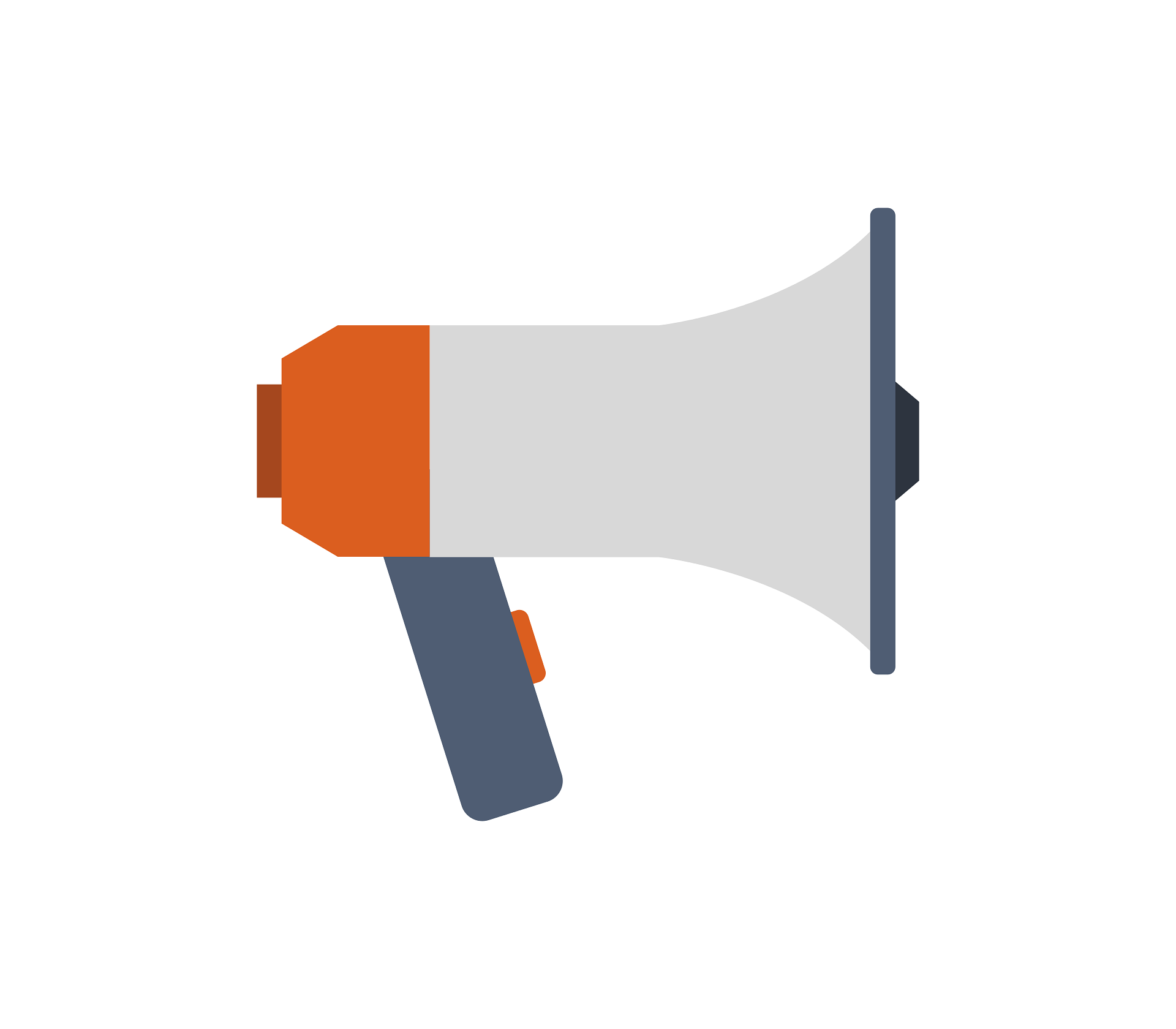Flawless UI is a must if your app is headed for success. Designing a high-quality front-end can be costly and time-consuming, but not so much if you’re able to choose the right toolset for your product. Find out the best front-end development options to consider in 2023.
Back-end powers the functionality of the system, while front-end enables its usability. You can argue whether the business logic layer is more important than looks (or the other way round) but the truth is, you cannot have a great digital product, such as a web application, without delivering on both levels.
User experience – a top priority in software development
The role of user experience in application development has been constantly growing. According to research by Forrester, a well-designed user interface can increase a website’s or an app’s conversion rate by up to 200%. What’s more, about 94% of users judge a digital product based on its design first, before deciding to engage or bounce.
With a seemingly limitless supply of apps, front-end perfection is one of the key ways of establishing superiority over the competition. The downside is that perfection doesn’t come cheap. One way to live up to customers’ UX expectations and not pay through the nose is to choose the right tech stack for developing your product.
Best toolkits for front-end development
There are multiple front-end technologies that can streamline your effort. Some will do it better than others, though. You need to carefully consider options to make the best decision with quality and cost-efficiency in mind.
For starters, find out about some of the best front-end technologies available for your project.
React.js – the most popular front-end technology out there
React.js keeps killing it in the front-end technology field. This open-source JavaScript library for creating dynamic UIs has been outperforming competing solutions for years with no serious sign of a trend change. Built in 2011 by Jordan Walke, a then-Facebook’s software engineer, React.js was deployed on Facebook’s News Feed soon after. Currently, it powers the world’s top apps, including Instagram, Airbnb, Netflix, Reddit, and, obviously, Facebook.
React heavily influenced JavaScript’s evolution with the new architecture model called Flux. The solution uses a single-directional data flow pattern to deal with state management complexity. As a result, an app is easier to understand and modify as it gets more complicated. React.js in many ways makes it easier for developers to create UIs, and it has plenty of advantages for business.
Key benefits of using React.js for UI development include flexibility, tons of reusable components, fast rendering thanks to virtual DOM structure, stability enabling smooth change implementation, search-engine friendliness, JSX extension for creating robust interfaces, and vast community support.

Vue.js – an efficient toolkit for building single-page and large-scale apps
Vue.js, another JavaScript-based tool, is one of the most commonly used front-end technologies. Conceived in 2013 at Google, it was designed as a lightweight, progressive framework combining the best React and AngularJS (a recently discontinued JS framework) features, including an HTML-based template syntax, virtual DOM implementation, and two-way data binding with a v-model directive.
Vue’s core library is focused on the view layer, but it’s accompanied by a massive ecosystem of supporting JavaScript libraries, providing advanced features like routing, state management, and build tooling. A framework is a handy tool for building single-page applications, as both Vue and SPAs share the idea of keeping things simple. Still, Vue provides a solid toolkit for developing UIs for large-scale apps.
Other noteworthy Vue advantages include ease of learning, code readability, customizability, integrability, comprehensive documentation, and popularity among tech industry leaders, such as Facebook, Adobe, Netflix, Grammarly, Trivago, and many more.
HTML5 Boilerplate – HTML, CSS, and JavaScript tools
Written HTML, CSS, and JavaScript, HTML5 Boilerplate is a collection of tools for building fast, robust, and cross-browser compatible web applications and websites. It streamlines the development process by providing designers with templates containing HTML-5 components. Released in 2011, Boilerplate soon went mainstream. Companies and institutions using this front-end technology include Microsoft, Nike, Creative Commons, and Obama Foundation.
With Boilerplate, skilled front-end developers can conjure a website in a matter of minutes. They can also leverage it for designing a complex, feature-heavy, multi-web page site. You can download HTML-5 Boilerplate from the project’s website either in a full form comprising explanatory documentation or in a stripped, lighter version. Those well-versed in the technology can also go for a custom solution and cherry-pick the necessary components.
Next.js – a React-based framework for web development
Next.js is one of the most popular front-end frameworks for React.js. Created in 2016 by Vercel, an American cloud company, it quickly made it to the top league, with tech giants like Netflix, Twitch, TikTok, and Hulu adding it to their technology stack.
Next.js enables several extra features outside React’s core capabilities, the crucial ones being server-side rendering and static generation. These functionalities allow you to sidestep issues occurring in traditional React web applications rendered in the client’s browser with JavaScript, including security, performance, and SEO drawbacks. Next.js has some other cool features that streamline development and help improve user experience.
One example is code-splitting which allows to splitting of an application into smaller chunks to improve load time. Another one is out-of-the-box Typescript support which helps minimize errors and save time on bug fixing. Overall, Next.js facilitates building a whole range of digital products, including single web pages, large websites, interactive user interfaces, progressive web apps, SaaS products, MVPs, and more.
Flutter – a flexible framework for user interface development
Created by Google in 2017, Flutter quickly grew to become the most popular cross-platform mobile development framework and one of the leading front-end technologies. Based on Dart programming language, Flutter is optimized for developing fast apps with amazing user interfaces that feel native and provide seamless experience both on iOS and Android platforms – even though it’s using a single codebase.
Flutter’s abilities are not limited to software development for mobile devices. The framework allows developers to create web app UIs, including responsive web design without a JavaScript bridge at a performance level rivaling React Native.
Last but not least, with Flutter, you can also build a user interface for Windows-, macOS-, and Linux-native software. Wrapping up the above, Flutter speeds up app development, ensures high scalability, comes with heaps of features – including built-in material design, Cupertino widgets, and rich motion APIs – and enjoys extensive community support.
npm – the world’s largest software repo
Typically interpreted as “Node package manager,” npm is officially “a recursive bacronymic abbreviation for “npm is not an acronym”.” Linguistics aside, npm is a JavaScript command-line interface and the default package manager for Node.js, a JS runtime environment. Maintained by GitHub-owned npm, Inc., npm is the world’s largest software repository, with over 1.3 million public and private packages for web and mobile applications, as well as other types of projects. It’s one of the most common frontend technologies for all sorts of companies across many industries, with examples including GoDaddy, eBay, LinkedIn, Trello, NASA, and Walmart.
npm allows developers to conveniently install, update, and uninstall JavaScript packages for front-end development, manage dependencies, run modules without using npx, roll out code updates without any damage to user experience, share code with other npm users worldwide, and more. Developers usually pair npm with Node.js, but both tools can be used independently or combined with other solutions.
Ionic – a component-rich toolset for hybrid app development
Ionic is a complete open-source devkit for developing cross-platform apps, also spanning other use cases, including micro frontends for mobile apps and mobile security. Originally created on top of AngularJS and Apache Cordove, it was rebuilt as a set of Web Components enabling users to choose between a range of other front-end development frameworks.
Ionic is focused on streamlining the development of hybrid mobile applications for Android, iOS, and Windows operating systems, but its toolkit extends far beyond that. You can leverage Ionic to create progressive web apps with a comprehensive collection of HTML, CSS, and JS components as well as desktop apps based on the Electron open-source framework.
Ionic is notable for its simplicity, ease of use, a multitude of ready-to-go components, and shallow learning curve, all contributing to faster time to market. Overall, it’s one of the top front-end technologies for delivering high-quality, aesthetic UIs.
Stuck choosing the right front-end approach? Reach out for advice!
Struggling to find the right approach to accelerate your project? With multi-year experience spanning all sorts of web technologies, we’ll gladly look into your project and provide you with customized advice to help you achieve your business goal as cost-efficiently as possible.













 +1 (888)
413 3806
+1 (888)
413 3806